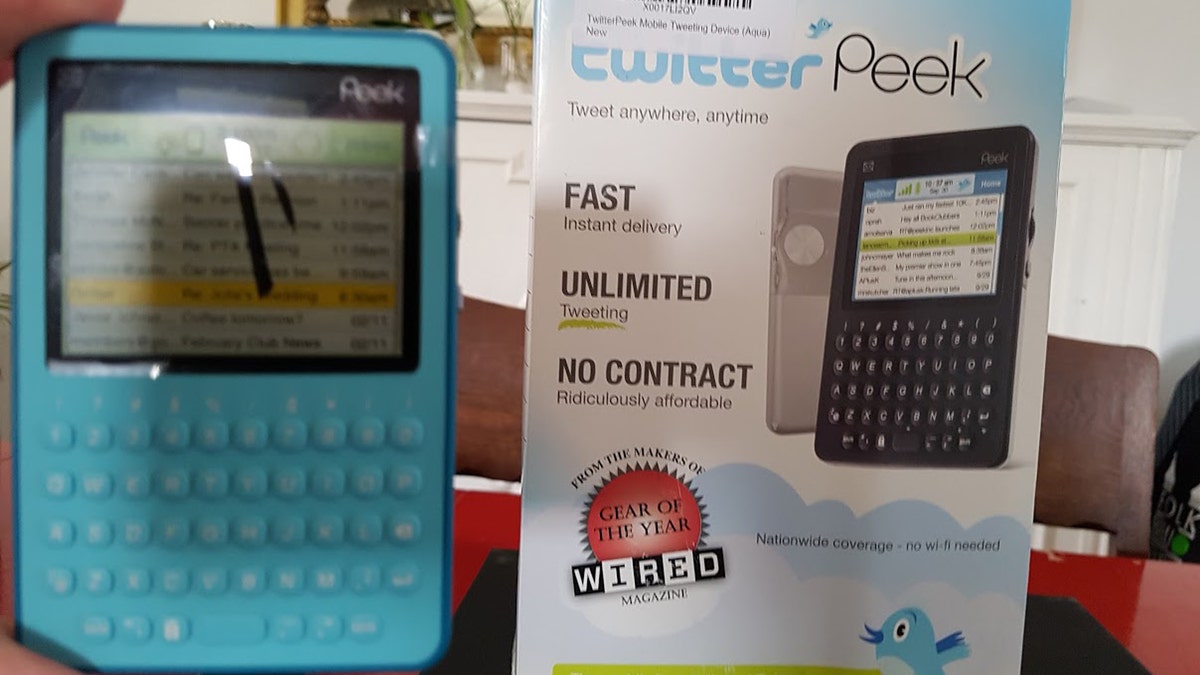
(Credit: Samuel West, Museum of Failure and Innovation)
From Google Glass to the Apple Newton, a museum in Sweden is shining a spotlight on some of the tech sector's biggest misses.
The Museum of Failure as it's known, has products from Apple, Sony, Kodak and Google, as well as several other makers, all of which struggled with consumers. The collection covers over sixty “failed products and services from around the world,” according to a description on the museum’s web page.
APPLE MAY GO AFTER VENMO, BUT WHY?
Samuel West, the museum's curator, advises companies on how to successfully innovate by learning from failure. “A lot of tech failures are because immature technology is launched [such as] Google Glass, Apple Newton,” West told Fox News in an email. A tech product can be marketed “before it actually works and way before it is useful,” he said.
But that’s all part of ultimately coming up with a successful innovation. “Innovation always requires an acceptance of failure...if you're afraid of failure, innovation is impossible,” West added.
Here are some of the notable flops from the exhibition, due to open in June in Helsingborg, Sweden.
Kodak DC40 digital camera
Innovation doesn't succeed if a company doesn’t embrace emerging business models.
That happened with Kodak, an early leader in digital cameras and is probably one of the best examples of innovation that failed. The DC40, manufactured by Kodak, was also branded as the Apple QuickTake 100. (Yes, Apple sold a standalone camera once.)
“[Kodak's] failure was an inability to truly embrace the new business models [that] disruptive change opens up,” according to an annotation attached to the Museum’s DC40 exhibit. “Kodak created a digital camera, invested in the technology, and even understood that photos would be shared online.”
What Kodak failed to do was realize that online photo sharing was a new business, “not just a way to expand the [photo] printing business,” according to the annotation.
AMAZON JUST ANNOUNCED THE ECHO LOOK
Google Glass
Google’s attempt to make smart glasses the next big thing in personal gadgets failed because the technology “still didn't have any useful applications,” West told Fox News.
Privacy concerns, due to the potential for furtive video recording, were also its downfall.
Despite the failure with consumers, Google Glass has gone on to have somthing of a second life, resonating in the healthcare and medical professions.
Nokia N-gage
The combination phone and gaming device failed at both, especially when you tried to put it to your ear and use it as a phone.
“Poor design and lack of games made it flop. Great idea, lousy implementation,” according to West.
Orbitoclast Lobotomy
This 1948 technology for performing lobotomies was supposed to make them quicker and easier than before.
“The tool was a success but the lobotomy as treatment was a terrible failure,” West said.
Harley-Davidson Perfume

(Credit: Samuel West)
This was a “brand extension failure” according to West. Bikers were not impressed.
Other notable failures include the Apple Newton, which suffered from poor handwriting recognition, questionable utility, and a high price. (Apple did go on to create the iPhone, however.)
Another was the Twitter Peek, “the world’s first dedicated Twitter device,” as described on the product’s package. Gizmodo described it as being "so dumb it makes my brain hurt."

(Credit: Samuel West)
Last but not least was the Sony Betamax, one of the most oft-cited flops.
“Sony refused to collaborate with other manufacturers, while JVC focused on building a collaborative ecosystem by licensing the VHS format,” according to an annotation attached to the Betamax exhibit. “The classic story of tech innovation failure demonstrates that technical excellence and being first to market is not enough.”




















